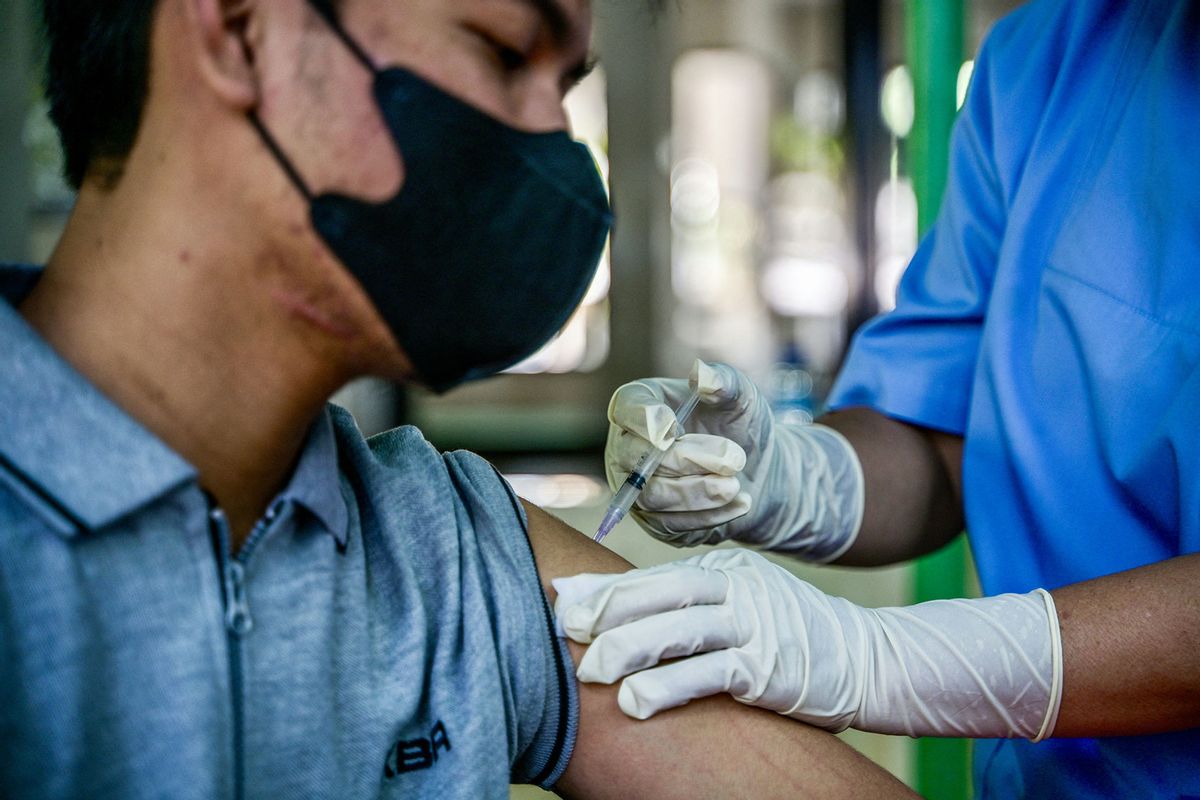At the beginning of the pandemic, many people hoped that infections with SARS-CoV-2, the virus that causes COVID-19 — or vaccines against the virus — would provide durable lifetime immunity, as is the case with diseases like measles or mumps. Instead, the COVID virus is more akin to the influenza virus, which mutates constantly and confers only short-term immunity. Both COVID and the flu require new and different vaccine formulas aimed at defeating newly circulating variants of the viruses. The inevitable result of this has been, for most of us, increasing vaccine fatigue.
But what if it were possible to protect against COVID and the flu, and other unknown viruses that haven't yet emerged, with just one shot? If that became reality, seasonal or annual boosters would be part of the past. And what if such vaccinations didn't even require a needle?
While those possibilities may sound far in the future, scientists at the University of California, Riverside, believe they could become reality relatively soon — perhaps within the next five to 10 years. As illustrated in a paper just published in the Proceedings of the National Academy of Sciences, a new, RNA-based vaccine strategy could be effective against any viral strain to emerge in the future. This next generation of vaccines would theoretically offer protection against viruses we aren’t even aware of yet, and could be used safely on infants and people with compromised immune systems, who today must often opt out of vaccination to protect their health.
This new RNA-based technology, the research paper reports, would target a part of the viral genome that is common to all strains of any virus and would depend on a “second immune system” response.
“We have a very strong reason to believe that all these other human viruses, like dengue virus and COVID-19, produce a protein that we can target to make a vaccine,” Shouwei Ding, distinguished professor of microbiology at UC Riverside and lead author of the paper, told Salon in a phone interview. With any future virus, "all we need to do is to identify the protein that can suppress RNAi.”
Here's what Ding was talking about. Traditional vaccines work by training the body to recognize and combat specific molecules found on a particular pathogen. For example, live-attenuated vaccines often use a weakened form of a virus to train the immune system. Once the weakened form of the virus is in the body, the immune system learns to recognize the antigen and develop immunity to it.
Another type of vaccine, based on "viral vectors," uses DNA and RNA to give cells a blueprint, rather than a piece of the pathogen itself, to build immunity. MRNA vaccines, like the best-known vaccines against COVID-19, use a synthetic version of single-stranded RNA to create a bespoke version of the mRNA within the body. This creates cells that can produce proteins like those found in a virus, and which then train the immune system to fight a disease before it enters a person’s bloodstream.
We need your help to stay independent
The new vaccine technology proposed in this paper would still use a live, modified version of a virus. But its effectiveness would not depend on the body's traditional immune response, which produces T-cells and memory B-cells. Instead, it would produce proteins that block a pathogen’s RNAi response, which is something all viruses create.
Researchers tested their theory in mice with a virus called Nodamura. The mice lacked T and B cells, but after one injection with the test vaccine, the mice were protected against the virus for at least 90 days.
This new vaccine tech could be key to fighting bird flu, researchers say: "We are actively seeking funding to do just that.”
In 2013, this same group of researchers at UC Riverside published a paper showing that flu infections also cause people to produce RNAi molecules. Ding said their next step will be to generate a universal, one-time-use influenza vaccine that would be safe for very young infants. Current flu vaccines are only recommended for infants over the age of six months. Furthermore, this new vaccine would likely be delivered as a spray. As Salon has previously reported, vaccines that don’t require needles may one day become standard.
This intriguing report arrives at a moment when the bird flu virus, known as H5N1, has reportedly begun to spread among cattle. There has also been at least one confirmed human case. As Salon has reported, infectious disease experts do not expect bird flu to become a pandemic this year, that's a definite possibility in the future. One virologist told Salon she would recommend public vaccination against bird flu right now. No avian flu vaccines have yet been approved for use in humans, however, although several are under development, none have been approved for use in humans yet.
Want more health and science stories in your inbox? Subscribe to Salon's weekly newsletter Lab Notes.
Ding said the vaccine his team is developing could be a contender: “That's what we're aiming for. We are actively seeking funding to do just that.”
Among the additional implications of this new vaccine technology, Ding said, could be more rapid protection than is now typical. “What we find is that two days after the shot, you are already fully protected,” he said. With current vaccines, "it will often take two weeks or more to be effective, and that's not very good for an emerging infection.”
Ding said his team anticipates having a vaccine candidate ready for human clinical trials in about a year. After that, the traditional regulatory would likely take 5 to 10 years — although a new public health emergency, like the COVID pandemic, could speed that up considerably.



Shares